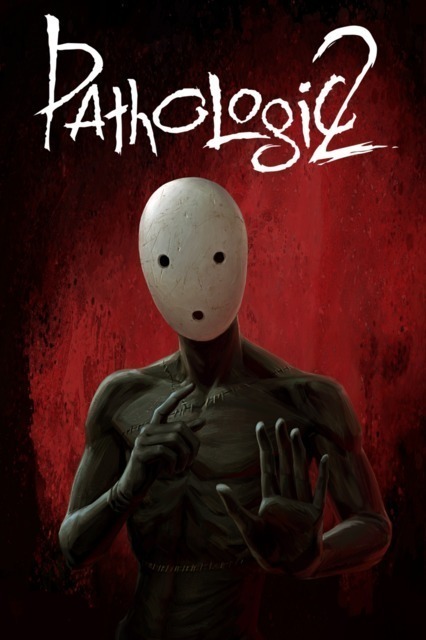No game can match the melding of the brutal and the beautiful that Pathologic 2 accomplishes.
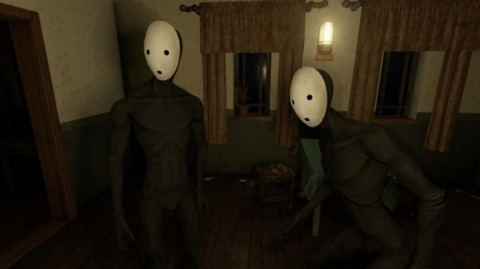
Pathologic 2 is a game about struggle. Ice-Pick Lodge, the developer, wants you to feel like you’re actually trying to survive in an isolated town plagued by a mysterious disease, supplies dwindling every day and never enough time to accomplish everything you need to do. Your health and stomach drain with a brutal, uncaring rapidity. Oftentimes, you limp from day to day with just enough to survive, hoping for a new cache of food or medicine to get you through the next 24 hours. Death is almost a guarantee, and each death penalizes you further. It’s an incredibly stressful game that forces you to fight for every single inch of purchase you can in order to make it through and often toes over the line of frustrating game design and arbitrary bullshit. At the same time, the struggle is an integral part of the experience, tied into every facet of the game’s narrative and pacing, and feels like a necessary part of the game. Pushing through the hardships and managing to learn truths about the Town, its people, and the disease feels like a triumph that few games match. But is the relentless struggle worth it?
Despite the 2, this is more of a remake of the original Pathologic than a full-blown sequel. The layout of the Town, overall plot, and cast of characters are basically the same as they were in the original, but things are shifted around and overhauled for better flow. There’s only one playable character for now, with the other two from the first game coming at some point in the future. The translation, which was almost incomprehensible at times in the original release (but also overhauled a bit in the HD rerelease), is beautiful and manages to convey the florid prose in a way that feels natural. Much of the core gameplay systems still remain but are refined and streamlined to make them a bit more approachable and modern, such as the addition of a sprint that makes getting around MUCH faster. To sum it all up, there’s really not much reason to play the original at this point, outside of curiosity to see where this game came from or to experience the other two characters’ stories before they are added to Pathologic 2.
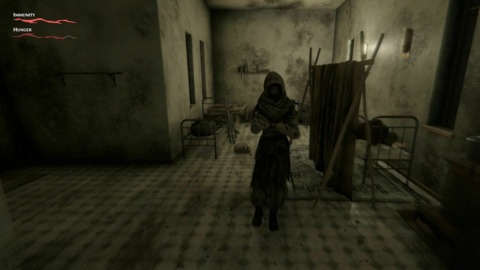
The single currently available character is Artemy Burakh, also known as the Haruspex. He grew up in the unnamed Town the game is set in, raised by his father who served as the Town’s only doctor and a leader of sorts in the Kin, an indigenous group of people who live in the Steppes around the Town. Artemy is taught the Kin’s form of spiritual medicine as a child, but his father later sends him out into the greater world to learn more traditional forms of medicine. Years later, after becoming a surgeon, he receives an urgent letter from his father spurring him to return home to deal with an unspecified oncoming threat to his home. Upon his arrival, he is jumped, forced to kill his attackers, and quickly learns that his father was killed. While trying to discover who killed his father and why, a mysterious disease with a nigh-100% fatality rate begins to afflict the Town. Artemy must fight to stay alive while working to stem the flow of the dying, all the while trying to both learn his father’s secrets and create a cure to save the Town.
After a brief tutorial, you are dumped into the Town and immediately expected to figure out how to survive. Your survival depends on management of your various needs: hunger, thirst, and reputation, among others. Each is important and letting any of them fall too low will inconvenience or outright kill you. For most of the game, you’ll have to scavenge items from trash cans and empty homes, trade found items with townspeople for things you need, keep your reputation high so people don’t attack you and shops can sell you useful items, and even craft your own tinctures and antibiotics with herbs and the organs of infected citizens. When your needs are met, you can explore the Town and complete various quests that give you more supplies and information about the Town, its people, and the true nature of the disease. However, the Town is large and many of the quests are time-limited, so you’ll never have enough time to do everything. It’s all about managing every resource you have, time included, to gather as many supplies and as much information as you can to have a fighting chance at survival.
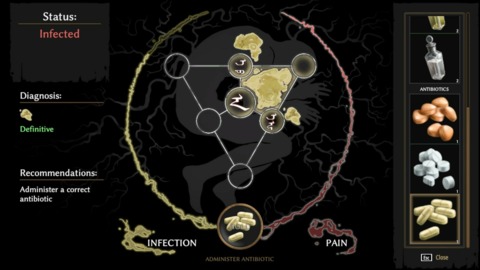
From minute one, Pathologic 2 is a game that forces you to scramble for whatever purchase you can manage. The game rarely gives you any reprieve, with more and more just piling on as the days become more intense due to the spread of the disease. Early on, you have more than enough time to complete quests and collect supplies, but later on, the days actually get shorter all while more quests pop up throughout the Town and infected districts begin to spread and cut off the quickest routes from one place to another, forcing you on long detours or directly through those dangerous disease-stricken areas. It quickly becomes apparent that you won’t have enough time to do every quest and save every NPC without a great deal of trial-and-error, luck, and generous save-scumming. You are forced to make sacrifices in order to survive.
There’re so many things that conspire to inconvenience you. Combat is a desperate scramble, hindered by a quickly diminishing stamina meter and inconsistent hit-detection. There is a rhythm to be found for success--namely, stepping back and letting the enemy walk into your charged strike followed by a flurry of quick punches before retreating to recharge stamina and do it again--but encounters with multiple enemies or unexpected enemies can easily lead to injury or death. Combat is best avoided altogether, unless you can get the drop on someone unawares or find a rare firearm that actually has ammo and doesn't jam to simplify matters. While you can obtain clothing that can protect you and weapons to make the combat easier, they are quite expensive and break with surprising rapidity, making you wonder if they’re even worth paying for in the first place, especially when you have several other needs demanding your attention.
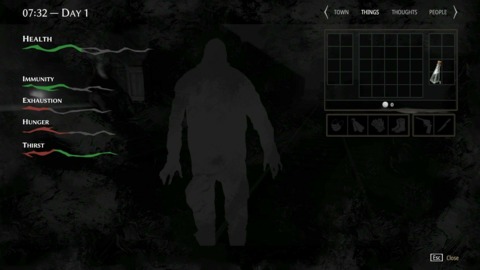
By far the worst hassle of all is your hunger meter. Artemy must have the fastest metabolism in existence because he needs to eat several times a day or else his health meter rapidly begins to drain. The game tries to justify this narratively by stating that the blooming of certain herbs in the Town makes its populace hungrier, but it still feels entirely ridiculous. Food is already scarce to begin with, due a supply shortage as you arrive back home, and becomes even harder to acquire later on as you can only trade for it with other townspeople at random or in shops via limited coupons instead of basic currency. Nearly every decision you make at a point revolves around getting more food and making sure you won’t run out. Despite the fact that I was doing quite well for much of the game, and was even following a guide semi-regularly, I STILL ran entirely out of food at several points and had to push forward with an empty pack hoping that my new daily supplies would arrive in time. It’s stressful as hell, and while I know that’s the point, it doesn’t change the fact that I think they took it a bit too far.
Death in Pathologic 2 is almost an inevitability, and as such, is meant to be part of the game. Important NPCs can contract the disease randomly when it reaches the districts they inhabit and infected characters will eventually die if not treated. Questlines and information may become lost if you don’t protect them, although you never actually fully lose the game if any of them die (which was actually the case for a special few NPCs in the original game). You can also perish, and while you just reload from your latest save, you are penalized for every death, typically with a cap on the size of one of your survival meters. Each death therefore makes it a little easier to die, and each subsequent death after that adds another disadvantage to the pile. These deaths persist across any of your save games and can only be removed bv starting over. Furthermore, the game is smart enough to save on quit, so even if you try to quickly Alt-F4 as you’re dying, the death, and its associated penalty, will be waiting for you when you relaunch.
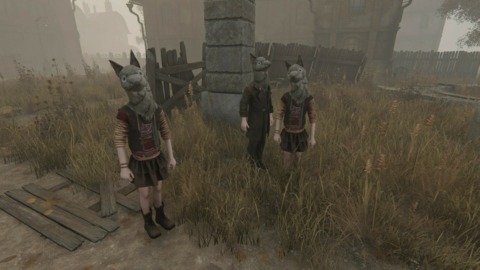
All of these frustrating elements come together to make for a game that often weighed on me. I was actually anxious at points during my playthrough, wondering how I was going to make ends meet and prevent my save file from falling into complete disarray, knowing that one or two large mistakes would cause a domino effect and make things even worse for the rest of the game. For the first few days of my playthrough, I had to force myself to even sit down and start playing, knowing that I was going to have to deal with stress and desperation if I wanted to continue. Pathologic 2 is a game that sticks relentlessly to its ideas, no matter how ‘anti-player’ they may seem, because it has an uncompromising vision. While it goes a bit too far in some ways, I think its struggles tie into every facet of the game. I also think it wouldn’t work so well without them.
After my first few days of playing, once I finally started to find a rhythm and peel back some of the layers of the mysteries of the Town, I was hooked. I felt immersed in the fiction of a desperate doctor in a remote place trying to survive an almost otherworldly plague that defies all attempts to stop it. The hassles were still there, but I began to learn how to manage them. A few days in, a Fund is established for the Town’s doctors: by helping sick townsfolk and finishing a certain quest each day, you are given a healthy amount of food and money in return. This reliable cache of supplies helped ease my constant search for food and medicine. I learned the layout of the Town and how best to deal with infected districts. My experiences with the combat taught me to avoid any conflicts I could, aside from those I could initiate from stealth. The obstacles of the game were harsh, but as such, every new day I reached and scrap of information I obtained felt earned, like I actually deserved it after everything I had gone through to get there.
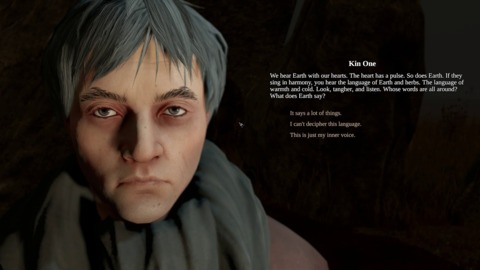
The story also began to unravel as I learned about the three ruling families and their idiosyncratic views on the Town, the spiritual beliefs of the Kin, the true nature of the disease and how it could be stopped, and what happened to Artemy’s father. These mysteries were all equally compelling to the extent that I wanted to persist through the oftentimes painful gameplay. The game has an oddly distinct style to its writing, very ethereal and oftentimes metaphysical. It’s part of why the original game’s translation was such a detriment to the game; it’s a dense, beautifully written game that certainly required a fine hand to ensure everything came across as it was originally intended in Russian. The storylines also unfold in a slow, tantalizing way that kept me eagerly wanting the next bit, even knowing I had to trek across the whole town all while my stomach was gnawing away at my insides to do it.
Most interesting of all is the theater concept that the game is entrenched in. As you start the game, you are given the impression that these events have happened before, and that you are just stepping into the role for another go at it. This was a theme that was hinted at early on and ‘confirmed’ later in the original game, but the whole setup is much more overt here. This aspect also ties into everything in the game, such as how the penalties for your deaths are impositions put on you by the director of this ‘play’ for making a mistake or during little pantomime performances you can watch every night at midnight in the theater. I love how this idea can be interpreted in multiple ways, either as you the player starting a fresh game of Pathologic 2 to try and do better than the last attempt or as an updated redo of the events of the original game. It’s a neat wrapper and was easily my favorite part of the original game’s narrative. I’m happy to see it return here--in my mind, better than ever.
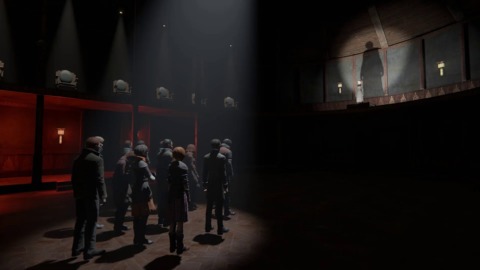
By the time I reached the end of the game, I was left in a conflicted state. On one hand, I found myself agreeing with the developers and their quest to make an unflinchingly brutal experience that plunges you a dangerous, desperate world where you have to fight to survive. On the other hand, I couldn’t count how many times I was stressed, frustrated, or outright pissed off at the game for making me deal with more tedious bulshit. I both can’t imagine ever going back to it again and find myself eagerly anticipating the other two characters being added, especially since they get very different views of the Town and have different ways of dealing with its challenges. It’s like a weird form of Stockholm Syndrome that I can’t really explain, a strange type of masochism that forced me to buckle under and eventually ‘enjoy’ the game despite its often repellant nature.
Ice-Pick Lodge expectedly received some harsh criticisms for Pathologic 2 when it was released. The struggle was just too much for some people, and it drove them away. As a result, they eventually patched in difficulty options for the game, with the expected caveat that the original difficulty was the intended way to play the game. Upon toggling the “Intended Difficulty” option off, you are presented with a set of 16 sliders that let you adjust things like damage dealt and received, how much items heal you for, and even the speed that your sliders decay. This means that the harshest offenders, such as hunger, can be tweaked to not be so offensively brutal. While I played at the Intended Difficulty for my playthrough and agree with the developer’s assertion that the game should be experienced that way, I’m glad that there is a way for those less patient or forgiving of their time being wasted to see the game in some manner.
Pathologic 2 is a hard game to recommend. It has one of the most striking depictions of a plague-stricken town I’ve seen in any medium, not just a video game, and is filled with compelling characters and storylines. At the same time, it is also one of the harshest gameplay experiences I’ve ever had, causing me actual anxiety and stress as I worried about getting myself stuck in an endless loop of death. I’d say my overall time with the game was a net positive, but I’ll also never forget the negative parts of it either. My suggestion is to give it a solid shot at the default difficulty, trying to learn to deal with the iffier parts of the game and pressing through as best you can. If it’s just too much, but you’re still really hooked on what’s going on, lowering the difficulty might be a compromised experience but it’s absolutely worth seeing nonetheless. I can’t answer the question of “But is the relentless struggle worth it?” for you, but for me personally, Pathologic 2 is a game I needed to see through and I’ll forever be glad I did.
